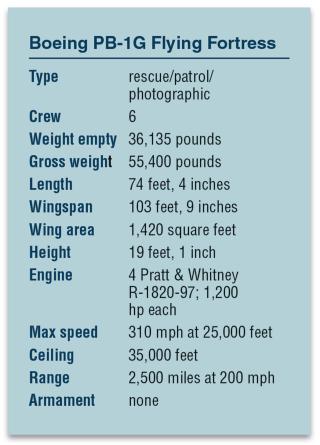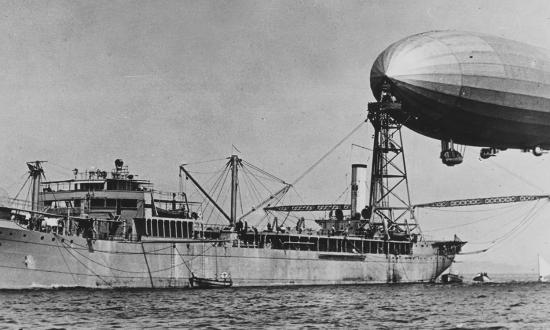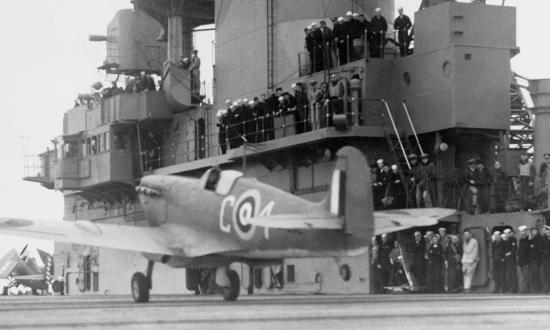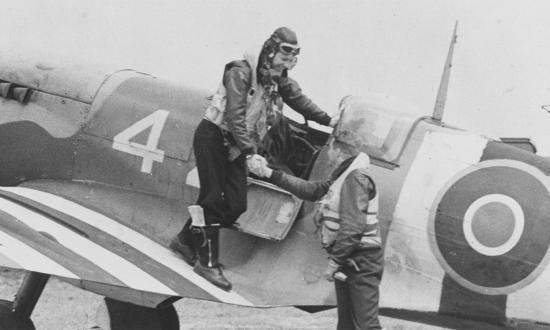The Boeing B-17 Flying Fortress—the most famous Allied bomber of World War II—was not the fastest bomber, nor did it have the largest bomb capacity, nor the longest range, nor was it produced in the greatest numbers. Rather, its great fame came from the U.S. Army Air Forces public relations program and its wide use. From the combat viewpoint, the B-17 was able to sustain considerable damage and continue to fly, and it had a heavier defensive gun armament than any bomber except for the U.S. B-29 Superfortress.
The B-17 was a midwing aircraft with a tail wheel, easily recognized by its circular-section fuselage, four engines, and large tail fin. Early models carried defensive .30-caliber machine guns in blisters. Beginning with the B-17E, a manually operated tail gun turret and power-operated ventral (“belly”) and dorsal turrets were provided—all with twin .50-caliber machine guns—in addition to several hand-operated guns. The B-17G added a “chin” turret with twin .50-caliber guns, giving that plane a total of 13 machine guns, justifying the term “flying fortress.” Despite that defensive armament, losses to German fighters and, to a lesser extent, antiaircraft fire were considerable; some of the B-17 raids over Germany suffered losses of more than 15 percent.
A total of 12,726 B-17s were built by Boeing (6,981), Douglas (2,995), and Lockheed-Vega (2,750). Most served in the European theater, but many flew in Pacific areas. After the war almost all surviving B-17s quickly were scrapped.
While the U.S. Navy adopted several Army aircraft during World War II, the B-17 was not one of them. During the war two B-17s did serve as Navy test aircraft. Only in 1945 did the Navy acquire 24 B-17G bombers (including one B-17F modified to G standards). Most of those planes were Douglas-built models, flown directly from the Long Beach factory to a Navy rework facility in the summer of 1945, where the massive APS-20 search radar was fitted for their use as radar picket aircraft. Their bomb bays were sealed, extra fuel tanks were installed, and, subsequently, all armament was removed; they carried a crew of 13.
The war ended before any of these planes—redesignated PB-1W—could be sent to war zones. Those radar-equipped “Flying Forts” served in several Navy squadrons from 1946 to 1956.1 (One became a jet engine test bed—the XPB-1W.)
Also, in 1945 the Coast Guard took delivery of the first of 18 PB-1G aircraft fitted with either wooden or inflatable lifeboats, a concept that had been demonstrated by the Army Air Forces. Those aircraft served in air-sea rescue and on international iceberg patrol until 1957. And one Coast Guard PB-1G was fitted with nine cameras to photograph U.S. territory. That Flying Fortress was the last B-17 aircraft flown by U.S. military services, making its final flight on 14 October 1959.
1. See Arthur Pearcy, U.S. Coast Guard Aircraft since 1916 (Annapolis, MD: Naval Institute Press, 1991), 123–26; and Gordon Swanborough and Peter M. Bowers, United States Navy Aircraft since 1911 (Annapolis, MD: Naval Institute Press, 1968), 79–80. Also, Scott A. Thompson, B-17 in Blue: The Flying Fortress in U.S. Navy and U.S. Coast Guard Service (Aero Vintage Books, 1993).








